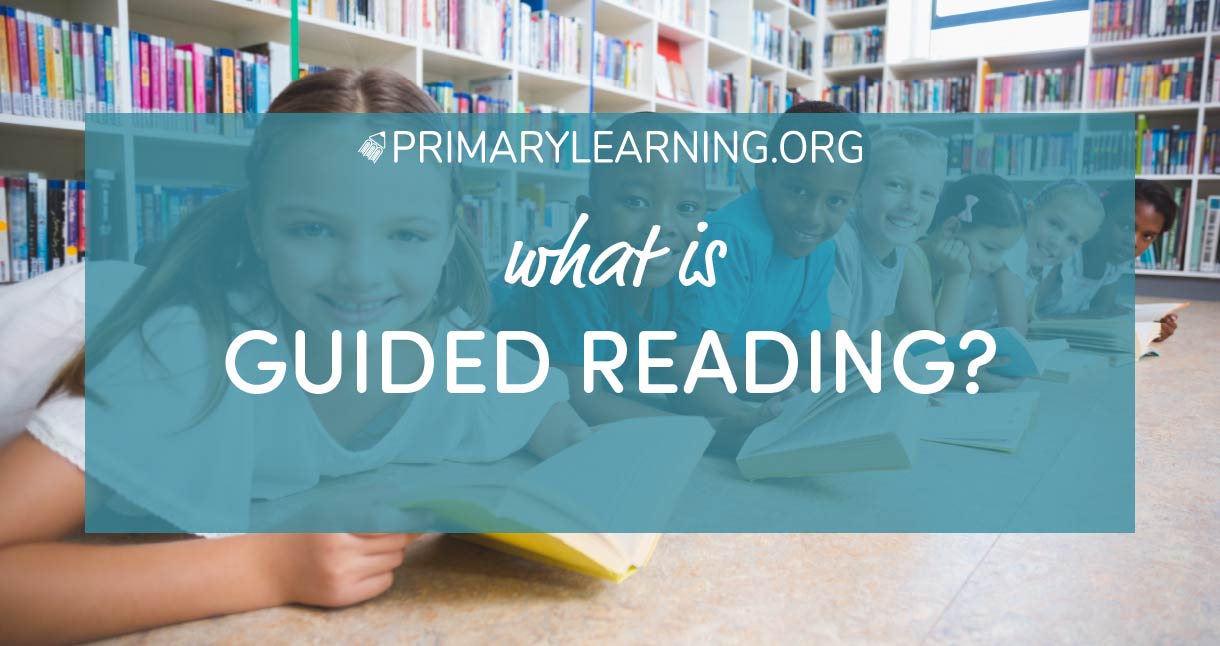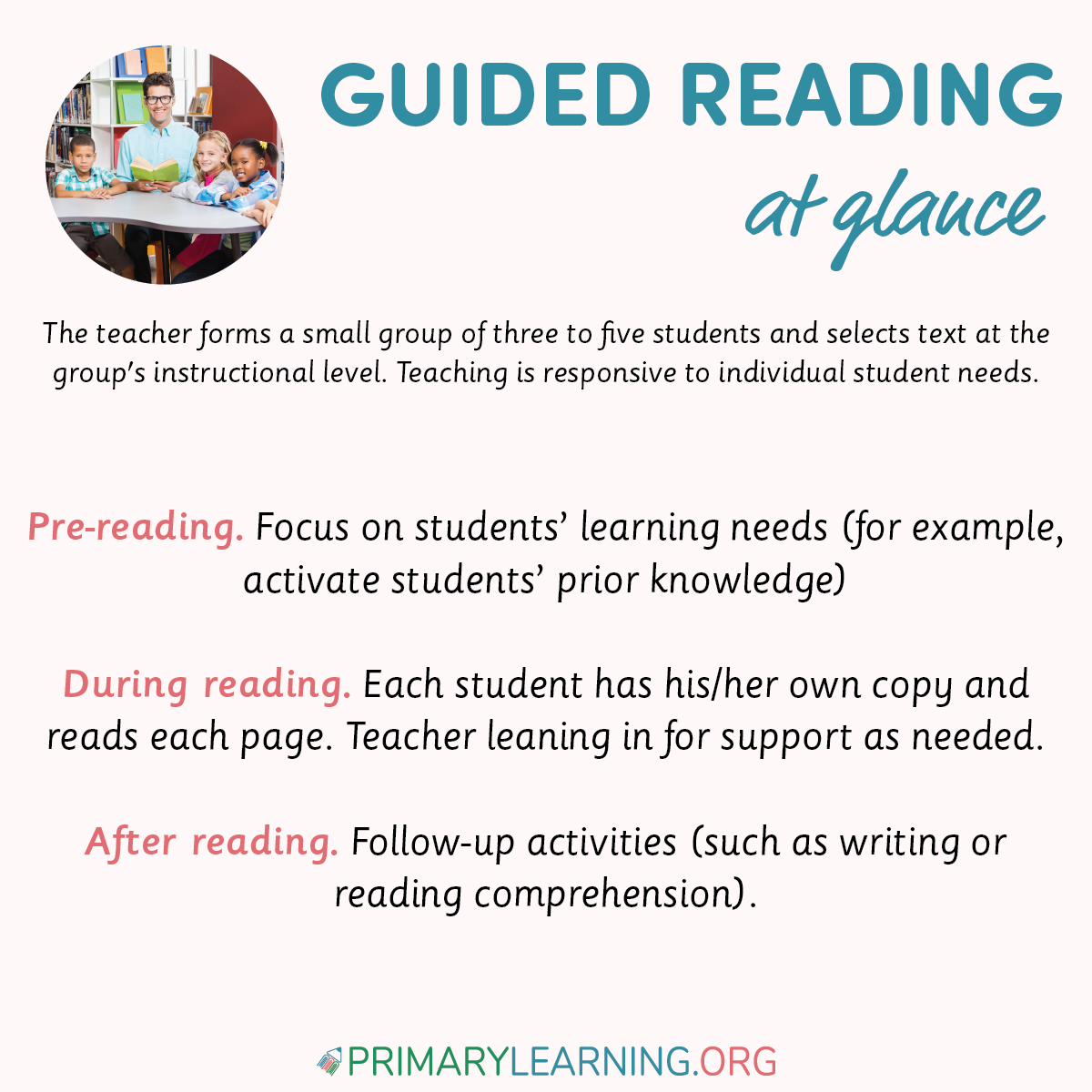

Posted by: Alesia Netuk
Updated: September 28th, 2023
What Is Guided Reading?
What Is Guided Reading?
Guided reading provides educators with the opportunity to support literacy development using a small group of students. Educators can identify students’ next steps and tailor their reading instruction to meet their students’ individual learning needs.
Creating Groups
Cohesive groups, based on students’ reading levels, are created for guided reading. Because they will be reading the same text during their guided reading session, it is important that students are grouped according to their instructional reading level. For example, students who are not yet reading but are demonstrating similar early reading behaviors could be placed together in a group. Students who are reading at levels three to four could comprise another group.
Educators typically form groups of three to five students. Small groups are essential because they allow the educator to lean in and support students as they read. Small groups also allow for particular lesson focuses, tailored to their learning needs.
Guided reading groups need to be flexible. Groups that are formed near the beginning of the school year may change multiple times as students progress at different rates in their learning. Educators must also be flexible when scheduling guided reading. For example, one group may need to participate in guided reading more frequently than others, given the students’ needs.
Selecting Texts and Choosing a Focus
When educators choose texts for guided reading sessions, they want to select ones at each group’s instructional level. This means that the text is not too easy, which will limit teaching and learning opportunities. It is also not too difficult, which will make it challenging for students to access the text. The instructional level is a text that students can access but will require some support with. After conducting a guided reading session, the educator can reflect on whether the text level was appropriate and what level to use during the next session.
In addition to choosing an appropriately leveled text for guided reading groups, educators must also consider the purpose of their lesson and which text will support that focus. For example, a group of students who have been developing their sight word banks may need additional practice with specific words, such as “the” and “a.” The educator can choose a book that these words frequently appear in. Perhaps students have not yet encountered a book with dialogue and are ready to learn about this feature.
The educator can select a text containing a small amount of dialogue to provide students with an introduction.
Components of a Guided Reading Session
Pre-reading
Guided reading begins with pre-reading, which may include various activities, depending on the lesson’s focus and the students’ learning needs.
For example, the educator may wish to activate students’ prior knowledge by previewing the title and cover of the text. Students can discuss the knowledge and experience they have with the text’s subject. Another pre-reading strategy is to lead the group in a story walk. The educator facilitates the discussion as the group previews the pictures and thinks about what is happening in the story.
The educator may also use this opportunity to point out vocabulary or other features, like punctuation marks, that they predict students may find challenging.

During Reading
When it is time to read the text, each student has her own copy and reads each page, with the educator leaning in for support as needed. This differs from the more traditional “round robin” approach, where students take turns, each reading a page while the rest of the group listens. Guided reading provides more opportunities for students to practice reading because they are not spending time waiting for their turn.
Many educators teach their students how to “whisper read” during guided reading sessions. To do this, each student focuses on his own book and reads in a whisper voice, loud enough for the educator to hear but not so loud that it causes a distraction for the other students. The educator leans in as students are reading, listening to them individually, and supporting them as necessary. For students who read more quickly than their peers, they may be prompted to begin reading again.
There are many things educators are listening for and supporting as students are reading. For example, educators may listen for fluency and prompt a student who has read a sentence word-by-word to go back and try it again, putting the words together more smoothly. Common support educators use during guided reading is using prompts to help students when they are stuck on a word or when they have misread a word. Questions such as, “Does that sound right?” or “Does that look right?” prompt a student to take another look.
Post-Reading
While listening to students read, the educator is taking note of anything she may want to discuss with the group afterward, during the post-reading component of the session. For example, she may want to highlight the strategies a student used to solve an unfamiliar word. Or, she may want to have a student who used great expression when he saw an exclamation mark, read that sentence to the group. If there was a portion of the text that students struggled with, the educator can use this time to provide more instruction.
The post-reading component should also include work on reading comprehension, such as a discussion on how the story ended, what a character did to solve the problem, or if predictions made during pre-reading were accurate.
The post-reading component may also include follow-up activities such as writing. Beginning writers may be given a short sentence stem taken from the book to complete. Or, they may spend some time using magnetic letters, practicing sight words from the story. More experienced writers may complete activities about the moral of the story, their favorite part, or connections they can make to the text.
Guided reading is an integral component of a comprehensive literacy program. Following each session, educators can reflect on the lesson’s purpose and the students’ achievement of the learning goals. Educators can then plan the next steps accordingly, providing very focused small group instruction.
LEARNING MATERIALS TO MEET EVERY CHILD’S NEEDS
Here, at PrimaryLearning.Org, we tend to deliver the best-differentiated learning materials to K-2 students. Our resources can be easily incorporated into multisensory lessons to meet every child’s needs, whether s/he is a visual, kinesthetic, or auditory learner.